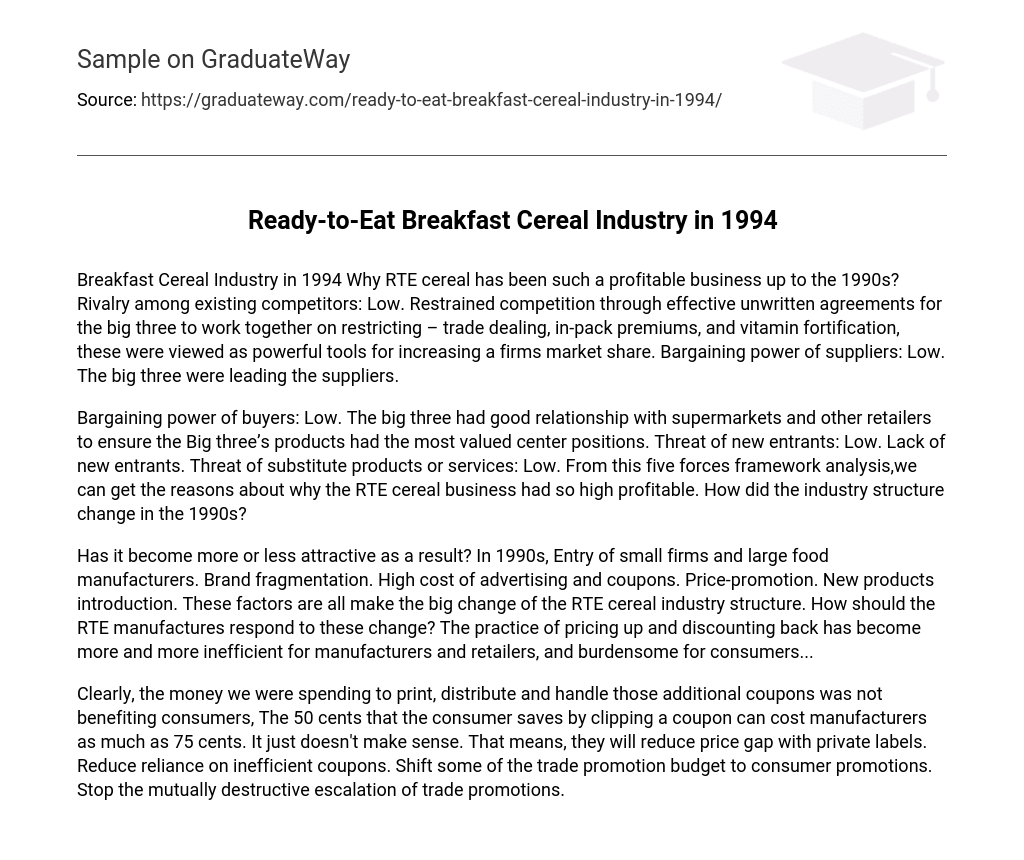Breakfast Cereal Industry in 1994 Why RTE cereal has been such a profitable business up to the 1990s? Rivalry among existing competitors: Low. Restrained competition through effective unwritten agreements for the big three to work together on restricting – trade dealing, in-pack premiums, and vitamin fortification, these were viewed as powerful tools for increasing a firms market share. Bargaining power of suppliers: Low. The big three were leading the suppliers.
Bargaining power of buyers: Low. The big three had good relationship with supermarkets and other retailers to ensure the Big three’s products had the most valued center positions. Threat of new entrants: Low. Lack of new entrants. Threat of substitute products or services: Low. From this five forces framework analysis,we can get the reasons about why the RTE cereal business had so high profitable. How did the industry structure change in the 1990s?
Has it become more or less attractive as a result? In 1990s, Entry of small firms and large food manufacturers. Brand fragmentation. High cost of advertising and coupons. Price-promotion. New products introduction. These factors are all make the big change of the RTE cereal industry structure. How should the RTE manufactures respond to these change? The practice of pricing up and discounting back has become more and more inefficient for manufacturers and retailers, and burdensome for consumers…
Clearly, the money we were spending to print, distribute and handle those additional coupons was not benefiting consumers, The 50 cents that the consumer saves by clipping a coupon can cost manufacturers as much as 75 cents. It just doesn’t make sense. That means, they will reduce price gap with private labels. Reduce reliance on inefficient coupons. Shift some of the trade promotion budget to consumer promotions. Stop the mutually destructive escalation of trade promotions.





